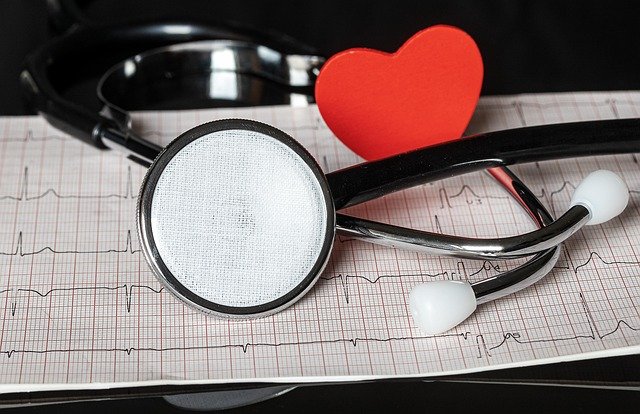Recognizing Early Signs of Heart Disease: Important Symptoms to Know
Heart disease remains a leading cause of death worldwide, but early detection can significantly improve outcomes. Recognizing the warning signs of heart disease is crucial for timely intervention and treatment. This article explores the key symptoms and early indicators that everyone should be aware of to protect their cardiovascular health.

What are the most common early signs of heart disease?
Heart disease often develops gradually, and its early signs can be subtle. Some of the most common early indicators include:
-
Chest discomfort or pain (angina)
-
Shortness of breath, especially during physical activity
-
Irregular heartbeat or palpitations
-
Fatigue or weakness
-
Swelling in the legs, ankles, or feet
These symptoms may occur individually or in combination, and their intensity can vary. It’s important to note that heart disease can manifest differently in men and women, with women sometimes experiencing more subtle or atypical symptoms.
How does chest pain or discomfort indicate potential heart problems?
Chest pain or discomfort, also known as angina, is one of the most recognizable signs of heart disease. It often feels like pressure, squeezing, fullness, or pain in the chest area. This discomfort may:
-
Occur during physical activity or emotional stress
-
Last for a few minutes and then subside with rest
-
Radiate to the arms, neck, jaw, throat, or back
-
Be accompanied by nausea, sweating, or lightheadedness
While not all chest pain is heart-related, it’s crucial to take any persistent or concerning chest discomfort seriously and seek medical attention promptly.
What role does shortness of breath play in heart disease detection?
Shortness of breath, or dyspnea, can be an early warning sign of heart disease. When the heart struggles to pump blood effectively, it can lead to fluid buildup in the lungs, causing breathing difficulties. Pay attention if you experience:
-
Breathlessness during everyday activities that didn’t previously cause issues
-
Difficulty breathing when lying flat or the need to prop up with pillows
-
Sudden, severe shortness of breath, especially if accompanied by chest pain
While shortness of breath can have various causes, persistent or worsening breathlessness warrants a medical evaluation to rule out heart-related issues.
How can changes in heart rhythm indicate potential cardiovascular issues?
Irregular heartbeats or palpitations can be early signs of heart disease. While occasional skipped beats are common and often harmless, persistent irregularities may indicate an underlying heart condition. Be aware of:
-
Feelings of your heart racing, pounding, or fluttering
-
Sensations of skipped or extra heartbeats
-
Dizziness, lightheadedness, or fainting associated with heart rhythm changes
These symptoms could signal arrhythmias or other heart problems that require medical attention. If you experience persistent or concerning changes in your heart rhythm, consult a healthcare professional for proper evaluation.
What other physical symptoms might suggest early-stage heart disease?
Several other physical symptoms can be early indicators of heart disease:
-
Extreme fatigue or weakness, especially during physical activities
-
Swelling in the legs, ankles, or feet due to fluid retention
-
Cold sweats or skin appearing pale or gray
-
Unexplained nausea or vomiting, particularly in women
-
Dizziness or lightheadedness
In the United States, heart disease awareness has improved significantly in recent years. However, many people still overlook or dismiss these early warning signs, attributing them to stress, aging, or other less serious conditions. It’s crucial to remember that early detection and intervention can dramatically improve outcomes for heart disease patients.
How can individuals assess their risk and seek appropriate care?
Assessing your risk for heart disease and seeking appropriate care involves several steps:
-
Know your family history of heart disease
-
Regularly check and monitor your blood pressure, cholesterol, and blood sugar levels
-
Maintain a healthy lifestyle, including a balanced diet and regular exercise
-
Avoid smoking and limit alcohol consumption
-
Schedule regular check-ups with your healthcare provider
If you experience any concerning symptoms or have risk factors for heart disease, consult a cardiologist or your primary care physician. They can perform tests such as electrocardiograms (ECGs), stress tests, or echocardiograms to evaluate your heart health.
| Screening Test | Purpose | Recommended Frequency |
|---|---|---|
| Blood Pressure Check | Detect hypertension | At least once a year |
| Cholesterol Test | Assess lipid levels | Every 4-6 years for adults |
| Blood Glucose Test | Screen for diabetes | Every 3 years after age 45 |
| ECG (Electrocardiogram) | Evaluate heart rhythm | As recommended by your doctor |
| Stress Test | Assess heart function during exercise | As needed, based on risk factors |
Prices, rates, or cost estimates mentioned in this article are based on the latest available information but may change over time. Independent research is advised before making financial decisions.
Recognizing the early signs of heart disease is crucial for maintaining cardiovascular health and preventing serious complications. By staying vigilant about symptoms, understanding risk factors, and seeking timely medical care, individuals can take proactive steps to protect their heart health. Remember, early detection and intervention are key to managing heart disease effectively and improving long-term outcomes.
This article is for informational purposes only and should not be considered medical advice. Please consult a qualified healthcare professional for personalized guidance and treatment.




